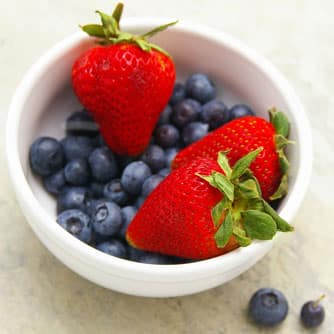High blood pressure (hypertension), a condition where the systolic blood pressure is greater than 140 mmHg and the diastolic measurement is over 90 mmHg, is a major risk factor for cardiovascular disease. Blueberries and strawberries are rich in a type of flavonoid compound known as anthocyanin. Eric Rimm, from Harvard School of Public Health (Massachusetts, USA), and colleagues analyzed data collected on 133,914 women and 23,043 men, surveying the subjects on their dietary intakes of flavonoids. At the close of the follow-up period of 14 years, 5629 cases of hypertension were documented in men and 29,018 cases in women. The team found that the highest average intakes of anthocyanins (ranging from 16.2 to 21.0 milligrams per day) were associated with an 8% decrease in the risk of hypertension. Notably, the researchers observed that a significant 10% reduction in the risk of hypertension was observed in subjects ages 60-plus who consumed more than one serving of blueberries per week, as compared with people in the same age group consuming no blueberries. Noting that: “Anthocyanins [demonstrate] vasodilatory properties … from specific structural similarities (including the B-ring hydroxylation and methyoxylation pattern),” the team explains that the underlying biological mechanisms by which flavonoids regulate blood pressure include the effects of flavonoids on vascular blood flow, vascular reactivity, and glucose uptake.
Berry Compounds Aid Blood Pressure Regulation
Aedín Cassidy, Eilis J O'Reilly, Colin Kay, Laura Sampson, Mary Franz, JP Forman, Gary Curhan, Eric B Rimm. “Habitual intake of flavonoid subclasses and incident hypertension in adults.” Am J Clin Nutr, February 2011, 93: 2 338-347; doi:10.3945/ajcn.110.006783.
RELATED ARTICLES




